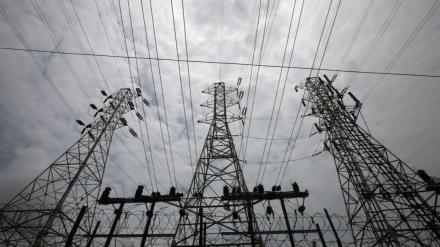By Rajasekhar Devaguptapu
Historically, Indian electricity distribution companies (discoms) have been running at a loss. This scenario was worsened by Covid-19 as it hit sales and raised costs. Now there is a widespread discourse about discoms’ financial turnaround, citing aggregate technical and commercial (AT&C) loss improvements over FY22 and FY23. Analysis suggests this change is impressive, but difficult to sustain.
The challenge becomes stark as AT&C losses are split across its components. These have not improved uniformly, and some have even worsened. Further, studies at the Centre for Social and Economic Progress (CSEP) show that although AT&C loss improvements are important, they alone cannot effect a financial turnaround without cost-reflective tariffs and helpful tariff-setting processes.
Regulators set AT&C loss targets for discoms, which inherently consist of two components — billing loss (energy terms) and collection loss (rupee terms). Billing loss is the difference of the energy discoms’ purchase from generators and what they sell to consumers. Collection loss is what discoms fail to collect after billing, both from consumers and the state government (unpaid subsidy).
According to the official data for FY22 and FY23, discoms made excellent progress in billing losses, besides receiving more subsidy from state governments than what was sought. A part of pending supply costs (approved earlier but deferred, called regulatory assets) also recovered. With these, discoms recorded measurable financial progress. But component-wise analysis throws more light on their sustainability.
First, by FY23, discoms reduced billing losses to an unprecedented 13.3% averaged across India. Although it missed the target of 12.6% (set by state regulators) by a whisker, this is not a small achievement. This missing margin is less than Rs 5,000 crore (FY23), in contrast to `11,150 crore for FY19. This improvement is critical as any billing loss beyond the normative target is treated as discoms’ business loss and adds to the accumulated financial deficit.
While billing losses closer to the targets are welcome, a question remains whether the targets are optimal? Examination of core data indicates that 27 public and private distribution utilities out of 70 across India (including power departments) have achieved a billing loss below 10% and these utilities together account for almost 40% of power sold in the country. Some big states such as Andhra Pradesh, Gujarat, Tamil Nadu, and Telangana have comfortably achieved this feat. This emphasises the heterogeneity across India, and the scope for tighter targets.
The second aspect is receipt of excess subsidy. For two successive years (FY22 and FY23), discoms received more subsidy than what was booked. Some of it may have been a correction for the underpayments during Covid-19. The excess subsidy receipt of 9.6% and 8.1% in FY22 and FY23 respectively increased cash flows and cleared close to 30% of unpaid subsidy dues accumulated till FY21.
Unfortunately, this excess subsidy payment masks the deterioration in collection from consumers. In FY23, “consumer non-collection loss” exceeded 22% of the annual financial gap of discoms, unheard of since FY09. The excess subsidy payment brought down the total (subsidy+consumer) collection loss by 50% in FY22 and 43% in FY23, but the overall picture improved by just 2%. This is one reason why regulators must bifurcate collection losses into its components — subsidies vs consumer non-payments. In fact, the latter should ideally be segregated between retail and governmental consumers, since a huge fraction of pending receivables pertain to the latter.
Third, the issue of regulatory assets, where regulators purposely set an insufficient tariff that is non-cost-reflective, ostensibly to prevent tariff shock to the retail consumers. Although laws disallow state regulators from creating such regulatory assets, this problem is still concentrated in a handful of states. In FY22, the regulatory assets were partly realised through tariffs. However, in FY23, close to Rs 20,000 crore of new regulatory assets were created, a surge of 47%.
The two-year AT&C loss improvement from 22.5% to 15.8% should ideally sustain. However, by assuming a limit of 100% subsidy payment (without overpayment) the loss crawls back to 17.3%. Even such loss figures do not give the true financial picture.
The gap between average cost of supply and average billing rate (revenues) widened, leading discoms’ accumulated losses to increase by 19% over two years, taking the total to Rs 6.77 trillion. It is so massive that for liquidation in one year through a one-time tariff surcharge, the consumers would need to bear a burden of `6.39/kilowatt-hour, greater than the average per unit bill they pay (excluding subsidy).
How do we fix this problem? Regulators must proactively guide discoms on loss management. The short-term scope for billing loss reduction is limited and subsidies cannot be paid above 100% indefinitely. Hence, the focus should be on tackling consumer collection loss; and there must be no new regulatory assets, rather the existing assets should be wound down systematically.
Regulators should segregate AT&C loss components and determine separate trajectories for subsidies, consumer non-collection, and billing losses. Research at CSEP has shown it is necessary to revisit the true-up process and align discom revenues with actual costs, besides reducing the time lag in recovery of projected versus actual cost differences as allowed into tariffs.
Although AT&C loss reduction is critical, it won’t solve all discom problems. Cost-reflective tariffs are important, and the energy transition will further strain their finances. With renewable energy (RE) taking off, high-value customers will exit discoms disproportionally. Also, pricing norms should reflect variability of RE, like time-of-day pricing.
We should celebrate short-term improvements, but not lose sight of the larger challenges. If we don’t take a holistic approach, discoms will continue to struggle financially, putting the energy transition at risk.
The author is Fellow at Centre for Social and Economic Progress (CSEP).
Disclaimer: Views expressed are personal and do not reflect the official position or policy of FinancialExpress.com Reproducing this content without permission is prohibited.
